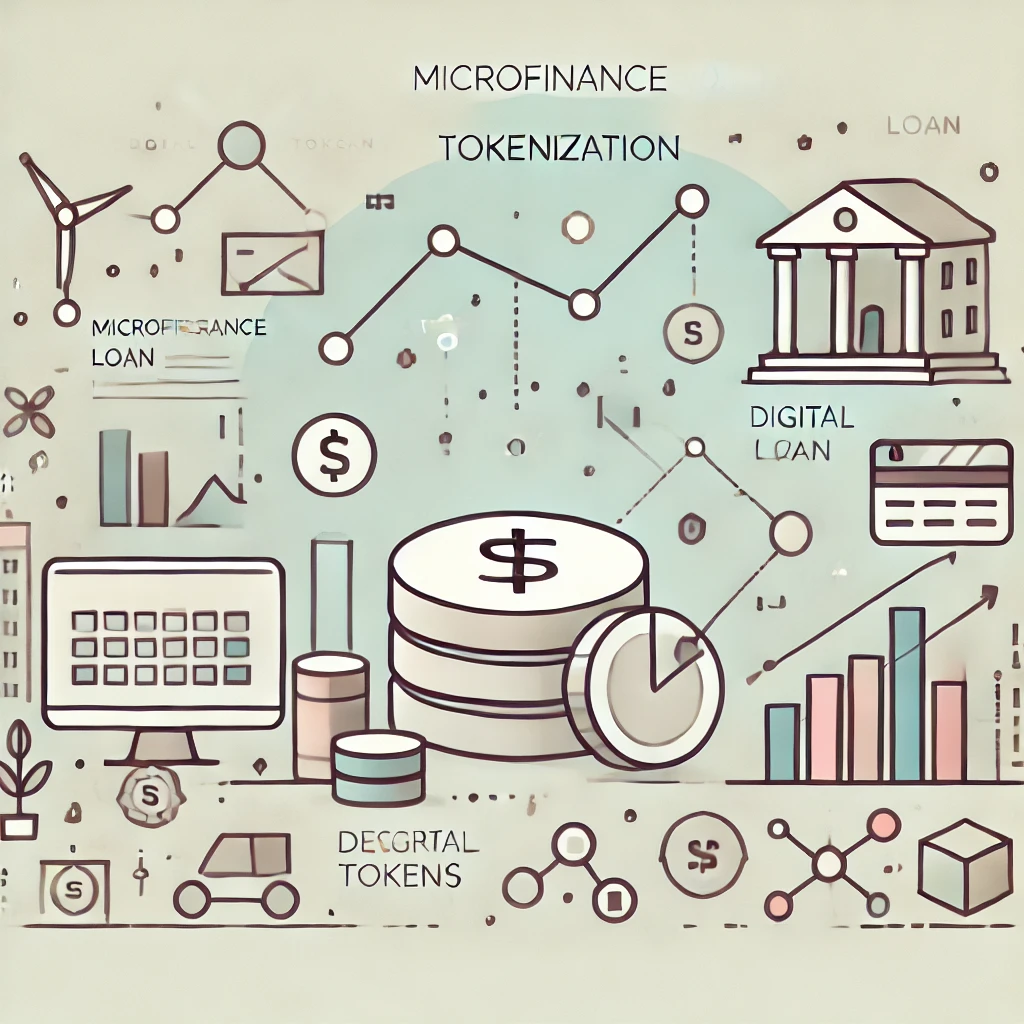Microfinance Loan Tokenization: What Is It and Why Is It Helpful
The biggest challenges Microfinance institutions (MFIs) face is raising sufficient capital to expand their lending operations. Microfinance loan tokenization is emerging as a transformative solution to address this funding gap, leveraging blockchain technology to enhance liquidity, transparency, and accessibility to new investors.
Microfinance loan tokenization is the process of converting loan assets into digital tokens on a blockchain. These tokens represent fractional ownership or rights to loan repayments, allowing investors to purchase and trade them on decentralized platforms. This model enables microfinance institutions to raise capital more efficiently by selling portions of their loan portfolios to global investors.
The process involves:
- Loan Securitization: Microfinance loans are bundled into tokenized assets.
- Blockchain-Based Representation: Each token represents a share of the underlying loan portfolio.
- Investor Participation: Institutional and retail investors can purchase tokens, funding microloans for borrowers.
- Automated Smart Contracts: Repayments and revenue distributions are managed through self-executing smart contracts, ensuring transparency and efficiency.
Benefits of Microfinance Loan Tokenization
1. Improved Access to Capital
By tokenizing loans, MFIs can tap into a broader pool of investors beyond traditional financial institutions. Tokenized loans enable microfinance firms to attract impact investors, decentralized finance (DeFi) participants, and socially responsible investors interested in financial inclusion.
2. Enhanced Liquidity
Traditional microfinance lending involves long repayment cycles, limiting capital recycling. Tokenization allows investors to trade loan-backed tokens in secondary markets, improving liquidity and enabling MFIs to raise additional funds.
3. Increased Transparency and Trust
Blockchain technology ensures that all transactions related to microfinance loans are immutable and traceable. Investors can verify loan details, borrower repayment histories, and fund allocations, building greater confidence in microfinance investments.
4. Lower Operational Costs
Tokenization reduces reliance on intermediaries, such as banks and financial brokers, lowering administrative costs. Smart contracts automate loan disbursements, repayments, and investor returns, streamlining operations and increasing efficiency.
5. Risk Diversification for Investors
Microfinance loan tokenization enables investors to diversify their portfolios by gaining exposure to multiple loans across different regions and borrower categories. This reduces risk concentration and improves investment stability.
How MFIs Can Implement Loan Tokenization
1. Select a Blockchain Platform
MFIs must choose a blockchain infrastructure that supports asset tokenization, such as Ethereum, Stellar, or a specialized DeFi lending protocol.
2. Structure Loan Tokenization Offerings
Loans must be bundled and tokenized in compliance with local financial regulations. MFIs should define token structures, ownership rights, and yield distribution mechanisms.
3. Develop Smart Contracts
Smart contracts ensure automated execution of repayments, interest distributions, and compliance monitoring. These contracts reduce human intervention, lowering risks of errors and fraud.
4. Engage with Investors
Marketing tokenized loans to investors through DeFi platforms, microfinance investment funds, and social impact networks will help raise capital. Education on the benefits of blockchain-based lending is essential for investor adoption.

5. Ensure Compliance and Security
Regulatory considerations, such as Know Your Customer (KYC) and Anti-Money Laundering (AML) procedures, must be integrated into the tokenization process to maintain legal compliance and secure investor confidence.
Challenges and Considerations
While microfinance loan tokenization presents significant opportunities, MFIs must navigate several challenges:
- Regulatory Uncertainty: Blockchain-based lending is subject to evolving legal frameworks, requiring MFIs to ensure compliance with financial regulations.
- Technology Integration: Implementing tokenization solutions requires investment in blockchain infrastructure and expertise.
- Market Adoption: Educating investors and borrowers on blockchain-based lending is crucial for mainstream adoption.
- Volatility Risks: If loans are tokenized on volatile cryptocurrency networks, market fluctuations may impact token value and investor confidence.
Conclusion
Microfinance loan tokenization is redefining how microfinance institutions raise capital, creating new opportunities for financial inclusion and investment diversification. By leveraging blockchain technology, MFIs can enhance transparency, improve liquidity, and access a global investor base, ultimately driving greater financial empowerment for underserved communities.
As the adoption of decentralized finance grows, MFIs that embrace tokenization will be well-positioned to scale their operations and impact more lives. While challenges remain, the future of microfinance lending is increasingly digital, transparent, and accessible to a broader range of investors.